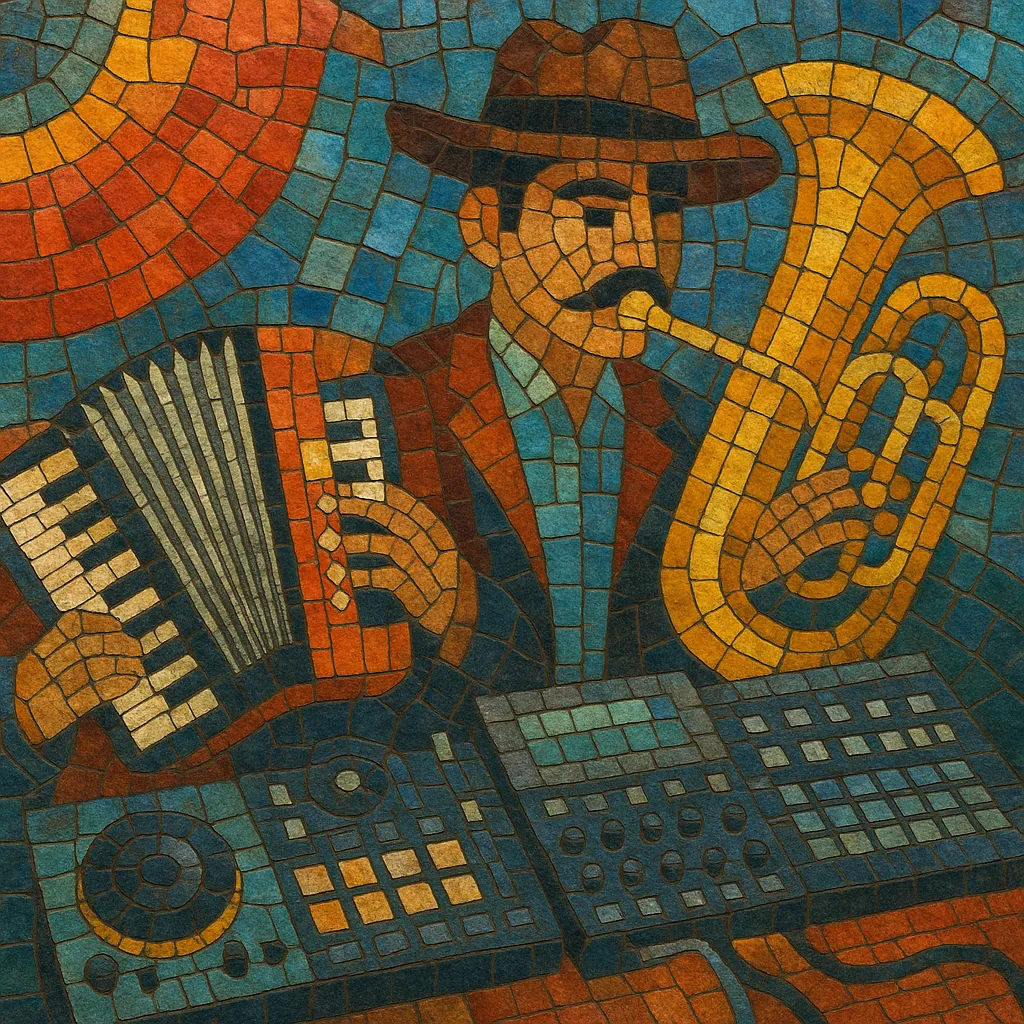Nortec is a Mexican electronic music movement that fuses the timbres and rhythms of norteño and banda sinaloense with club-oriented techno and house production. Its name is a portmanteau of “norteño” and “techno,” and its signature sound layers sampled or newly recorded accordions, tubas, clarinets, trumpets, and tarola (snare) patterns over four-on-the-floor beats, sequenced basslines, and modern synth textures.
Born in Tijuana’s border-city milieu, Nortec treats traditional dance forms (polka-tinged two-steps, brisk banda marches) as raw material for loops, cuts, and minimal arrangements. The result is music that is both regionally rooted and cosmopolitan—nostalgic in timbre yet forward-looking in structure and sound design. Performances often integrate striking visual art and multimedia, reinforcing the scene’s identity as a design-savvy, urban movement.
Tijuana’s proximity to the U.S. and its vibrant nightlife incubated an electronic underground where producers experimented with sampling local folk and popular forms. Around the late 1990s, a circle of artists began pairing norteño and banda instrumentation (accordion, tuba, brass, tarola) with techno/house drum programming and sequenced bass—a hybrid that would be labeled “Nortec.”
Under the banner of Nortec Collective, members released compilations that crystallized the sound and aesthetic. The music’s hook was immediate: familiar regional riffs and polka-derived rhythms transformed into sleek, minimal dance cuts. Albums such as The Tijuana Sessions brought international attention, tours, and festival slots, while the project’s strong visual identity (graphics, stage design, and VJ work) helped define Nortec as both a musical and design-forward movement.
As members pursued distinct aliases and collaborations, sub-projects flourished—some leaning more club/minimal, others foregrounding melodic folk motifs or cinematic textures. The scene received award nominations and media coverage worldwide, anchoring Tijuana as a node in global electronic culture. Even as the original collective structure shifted, key artists continued to release music and tour, refining the balance between traditional motifs and contemporary production.
Nortec demonstrated how regional Mexican music could converse with modern dance idioms without pastiche, opening pathways for later Mexican and Latin American electronic hybrids. Its approach to sampling, rhythmic grid alignment of folk grooves, and multimedia presentation influenced subsequent generations of producers exploring the intersection of heritage sounds and club culture.


